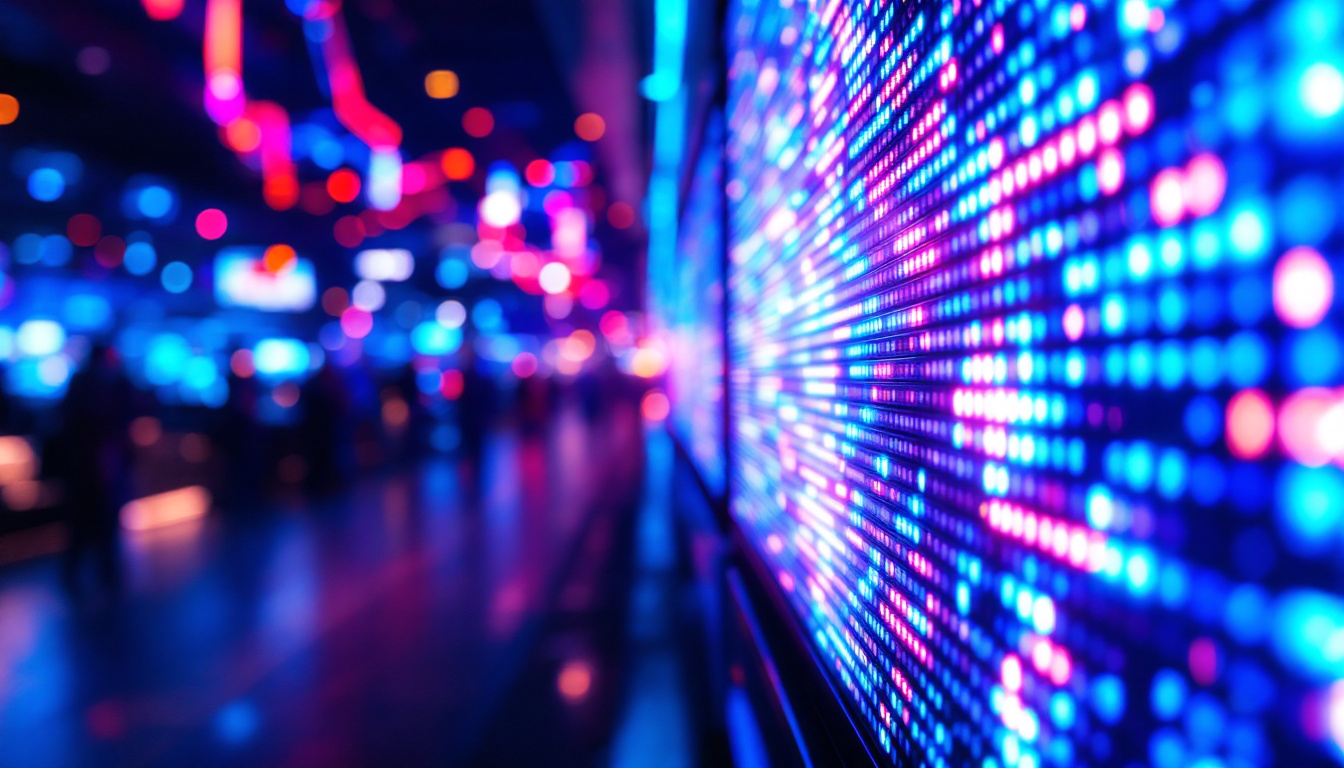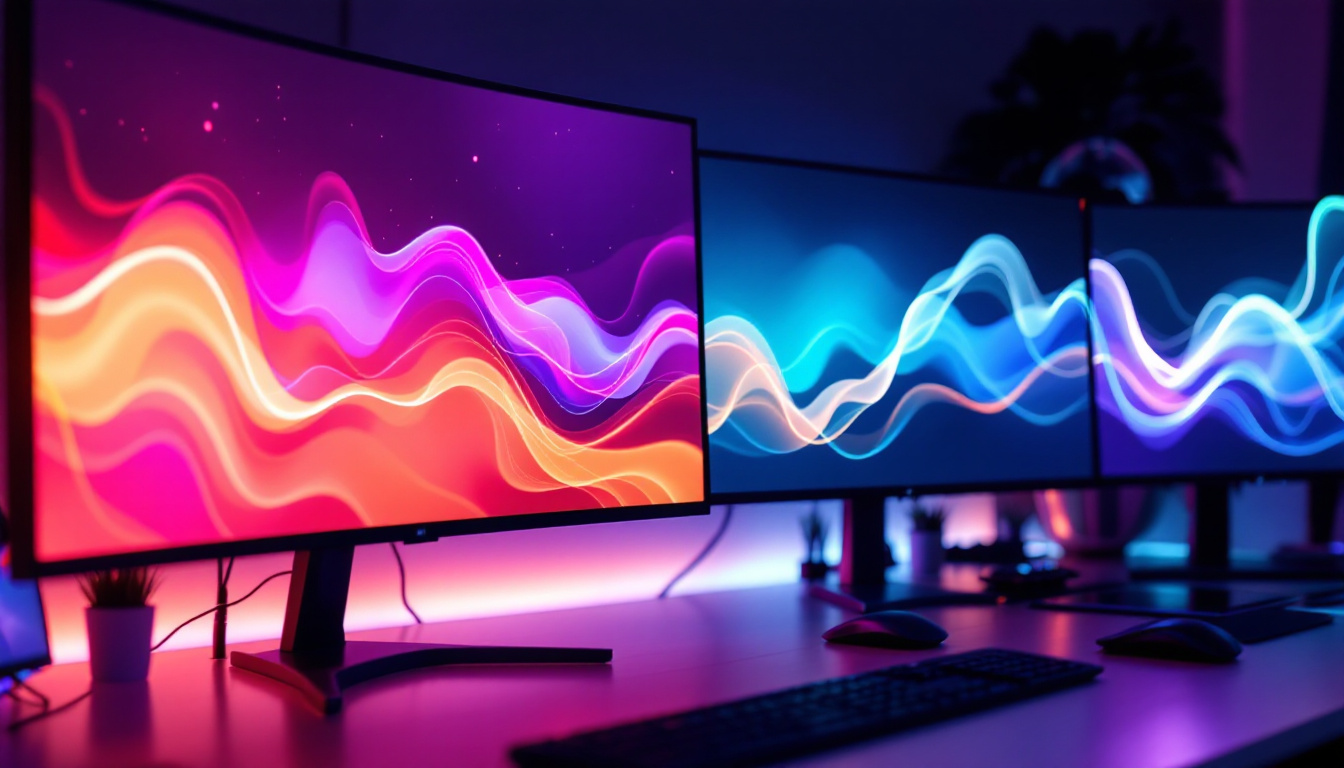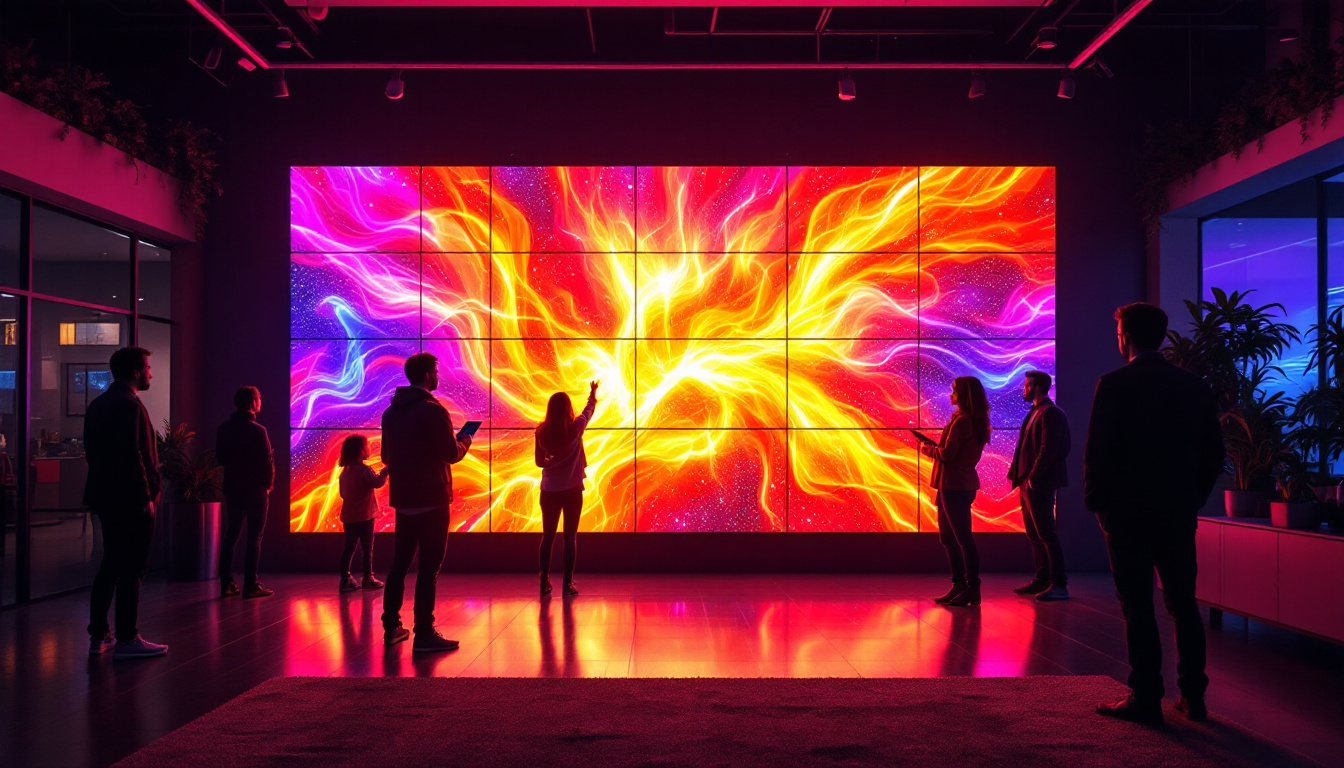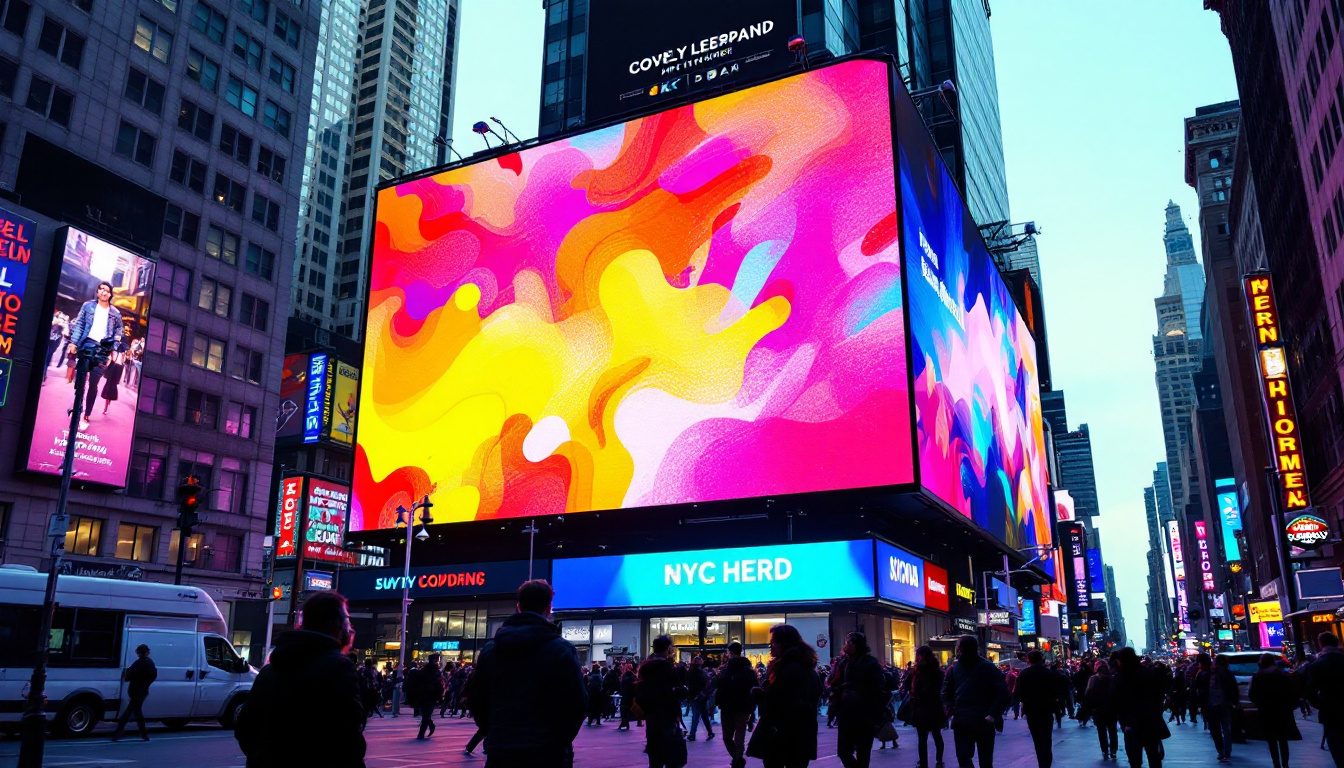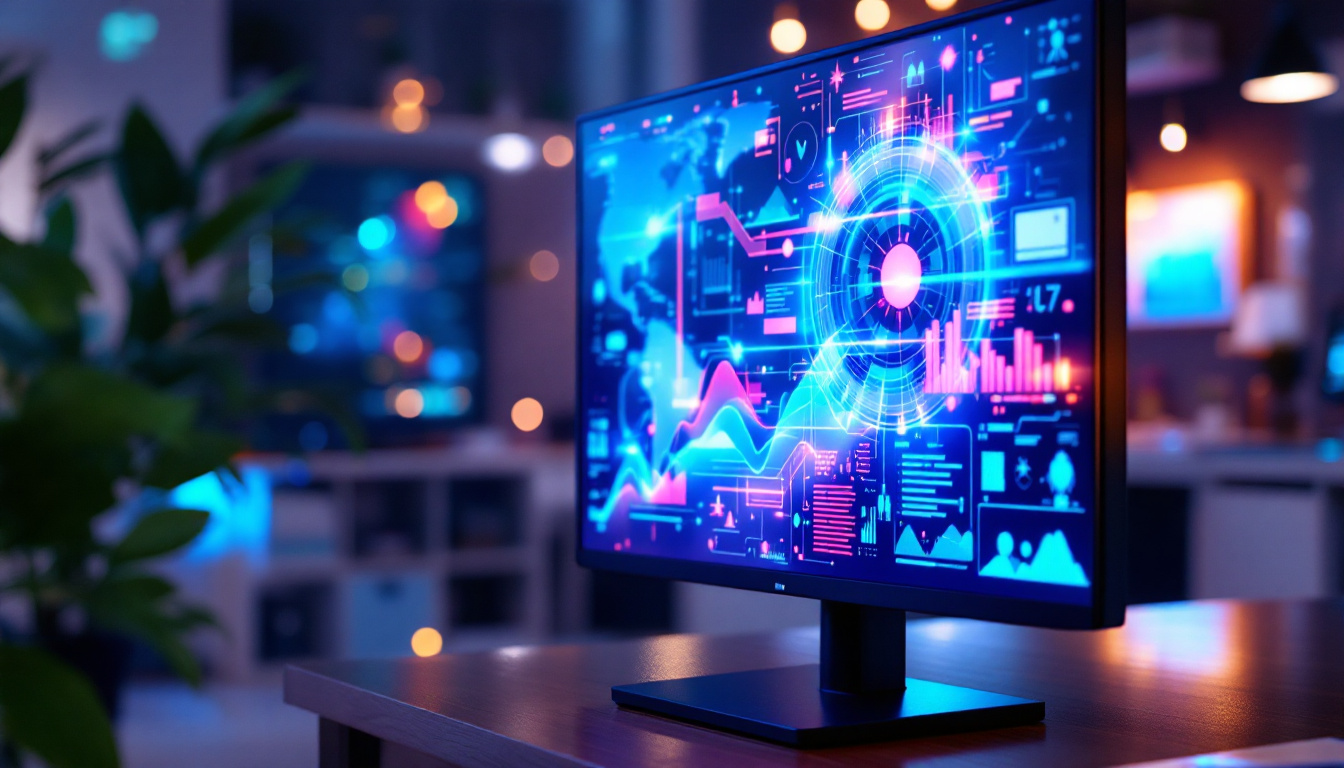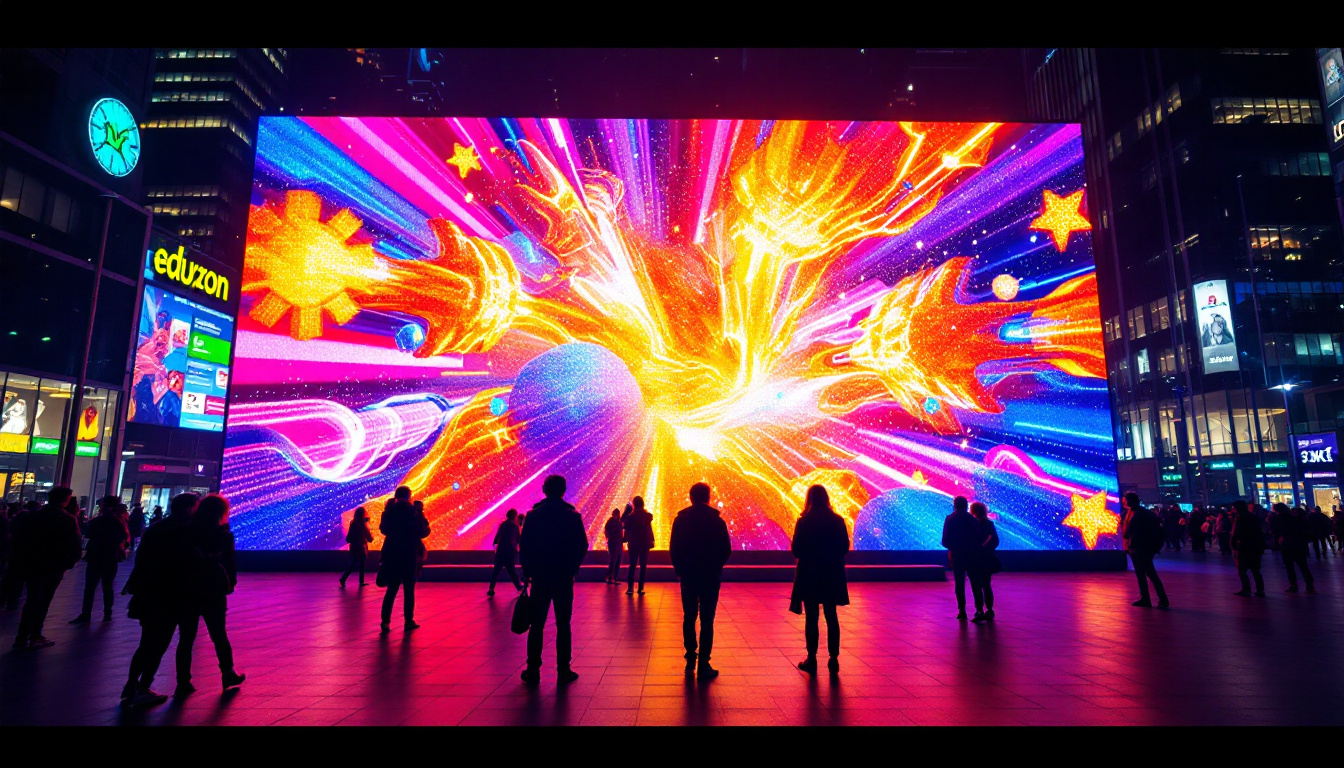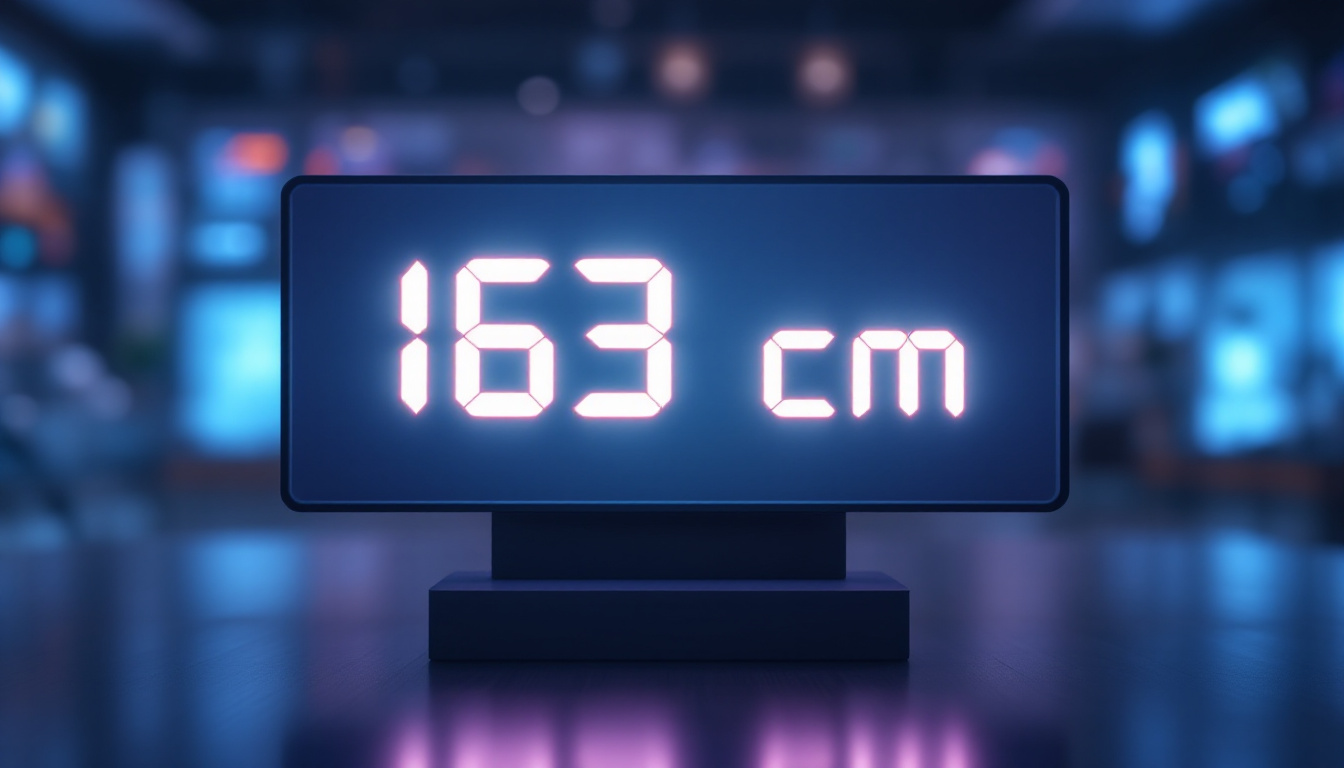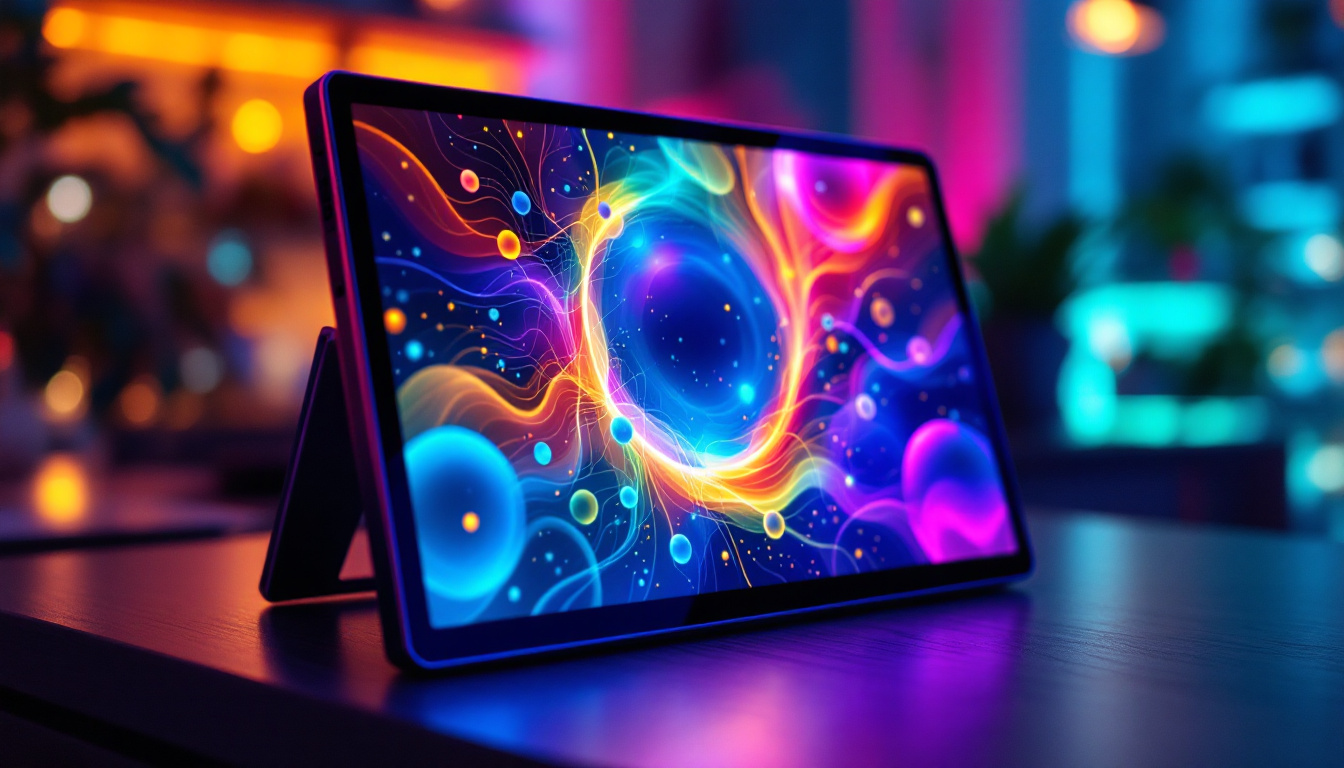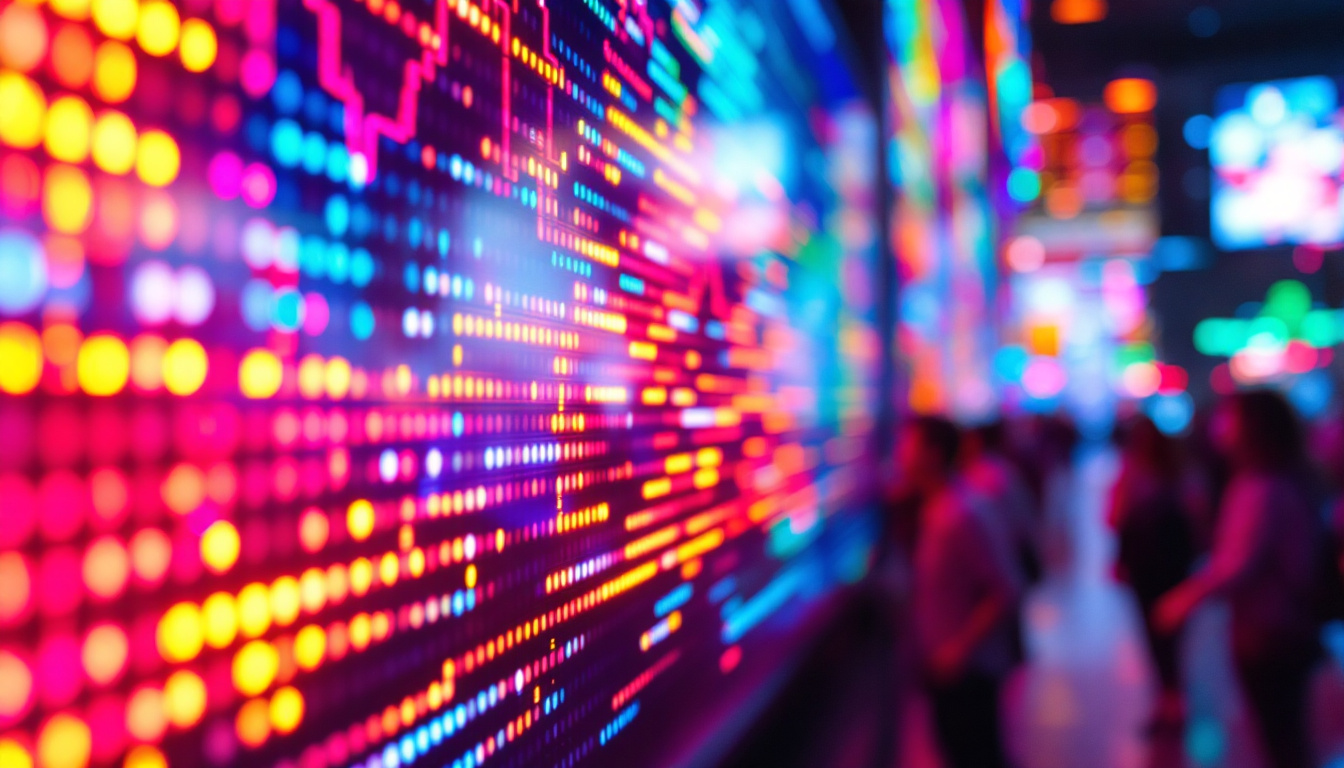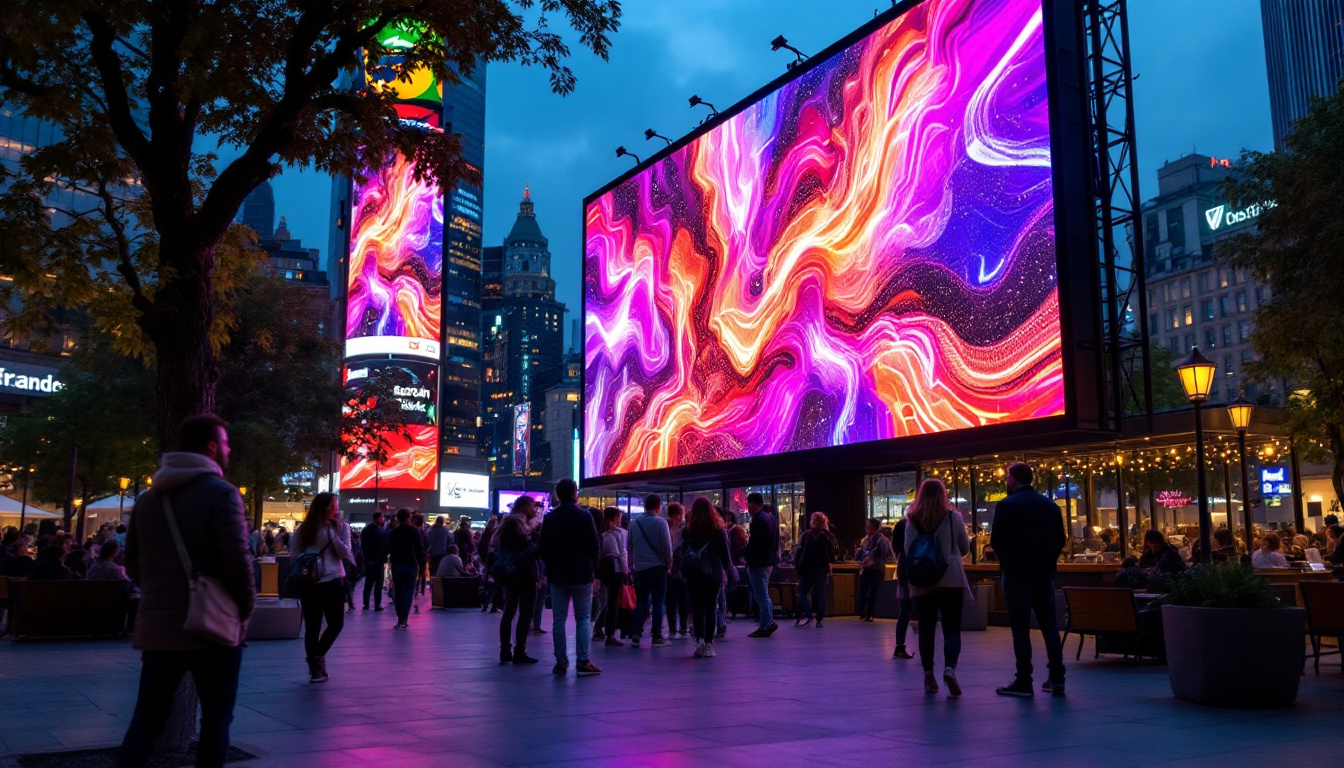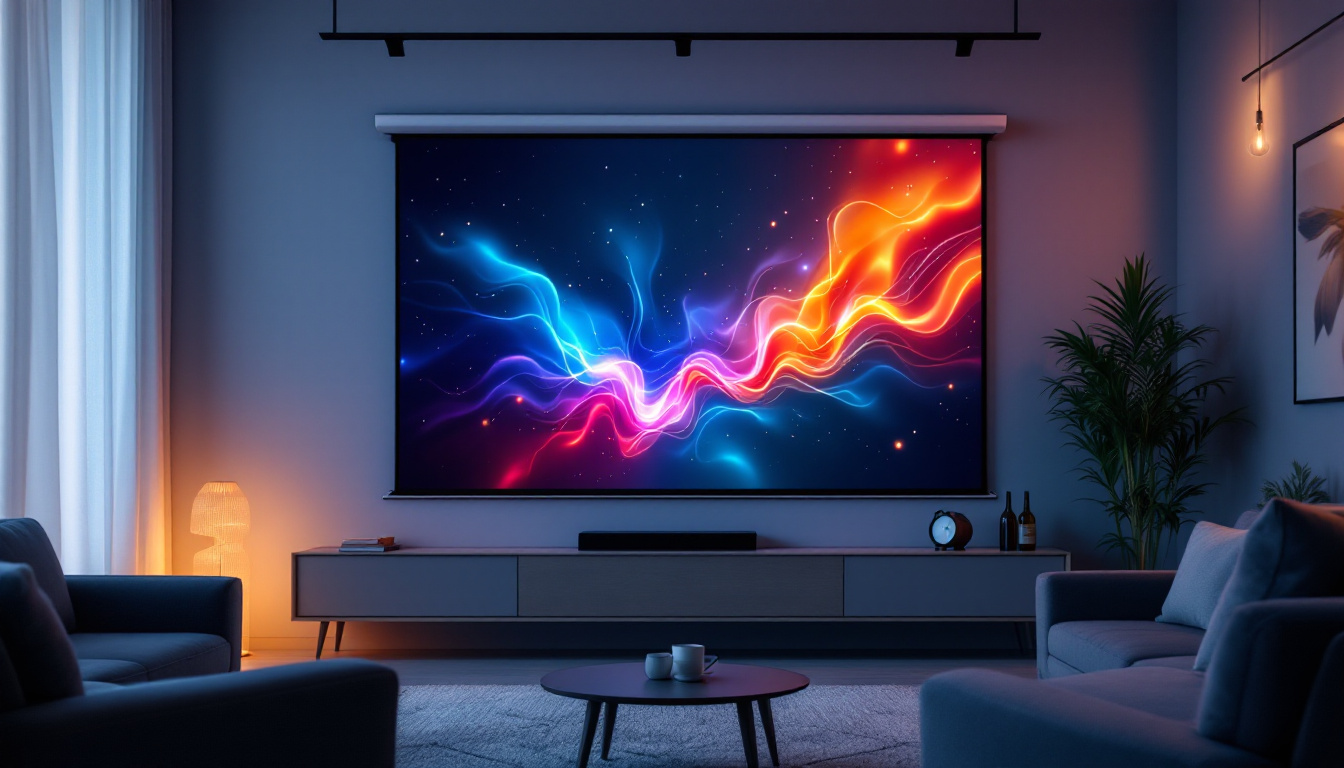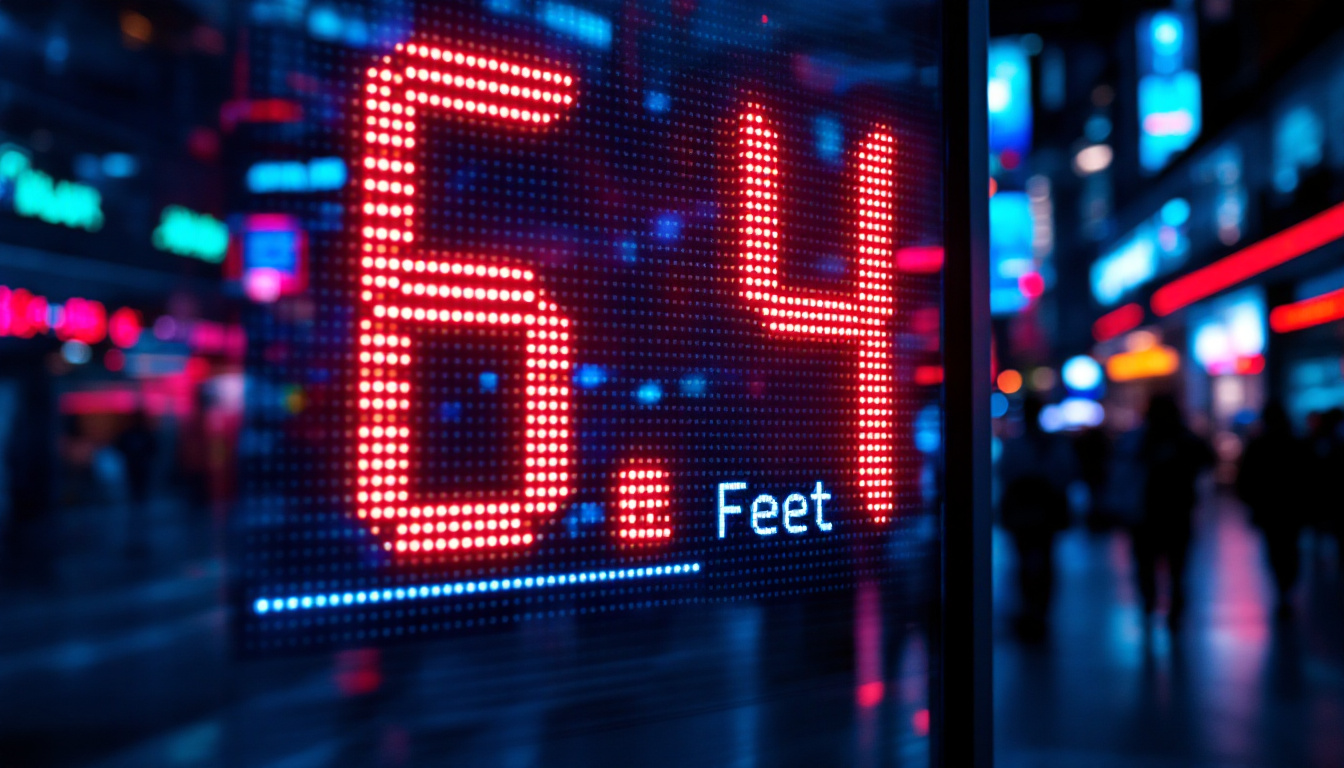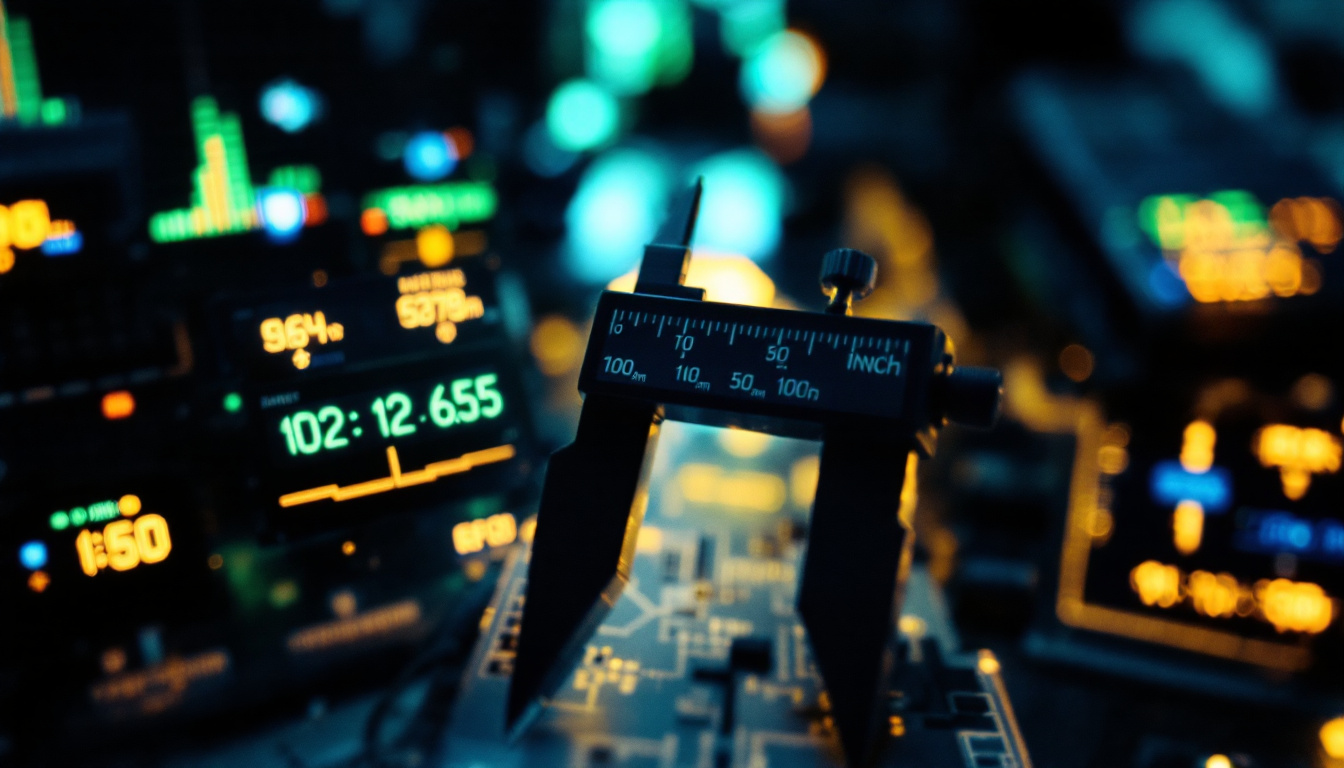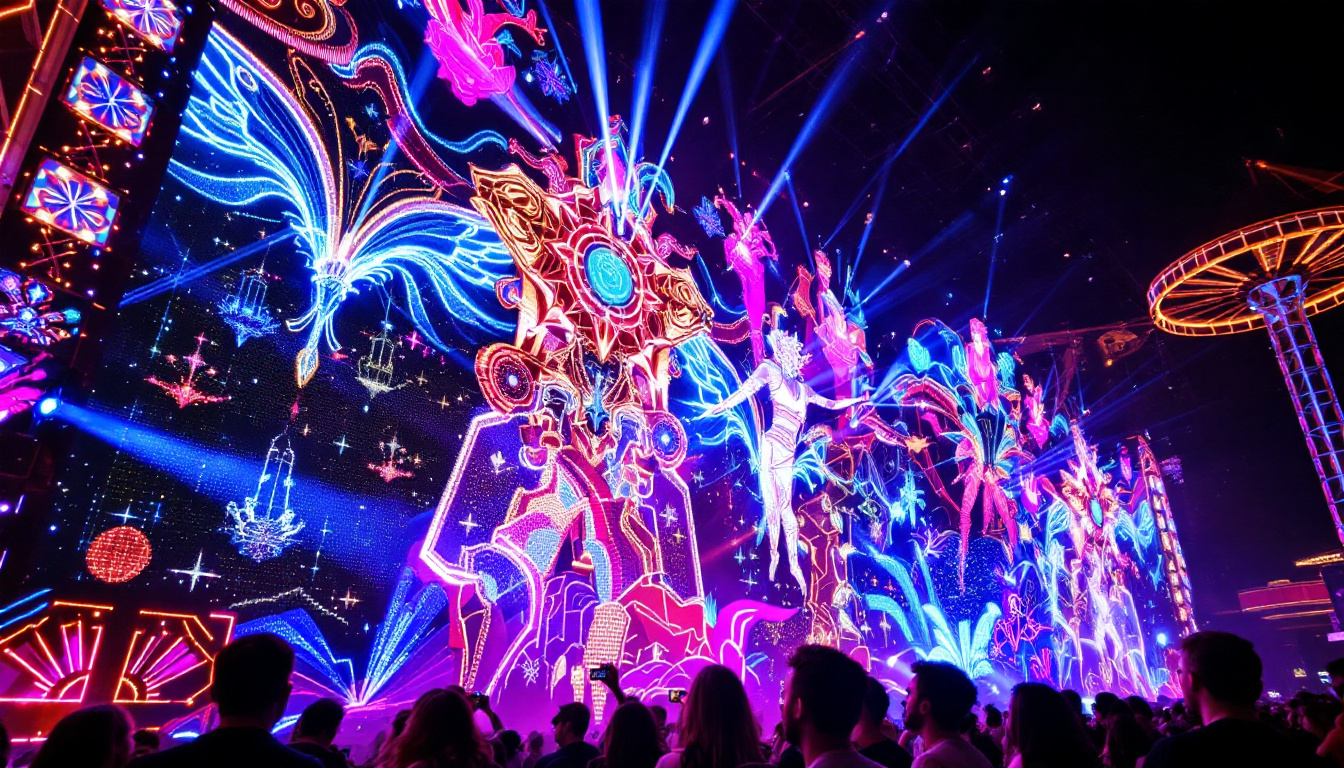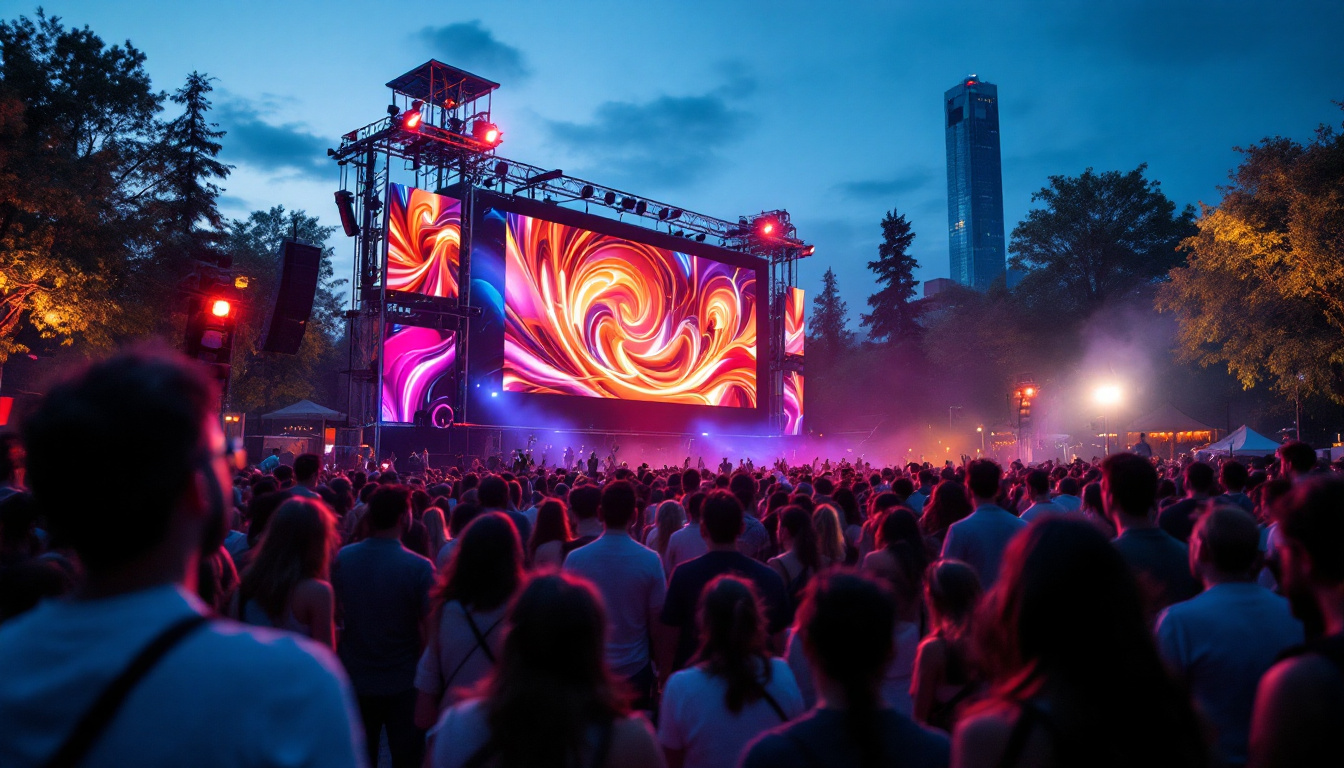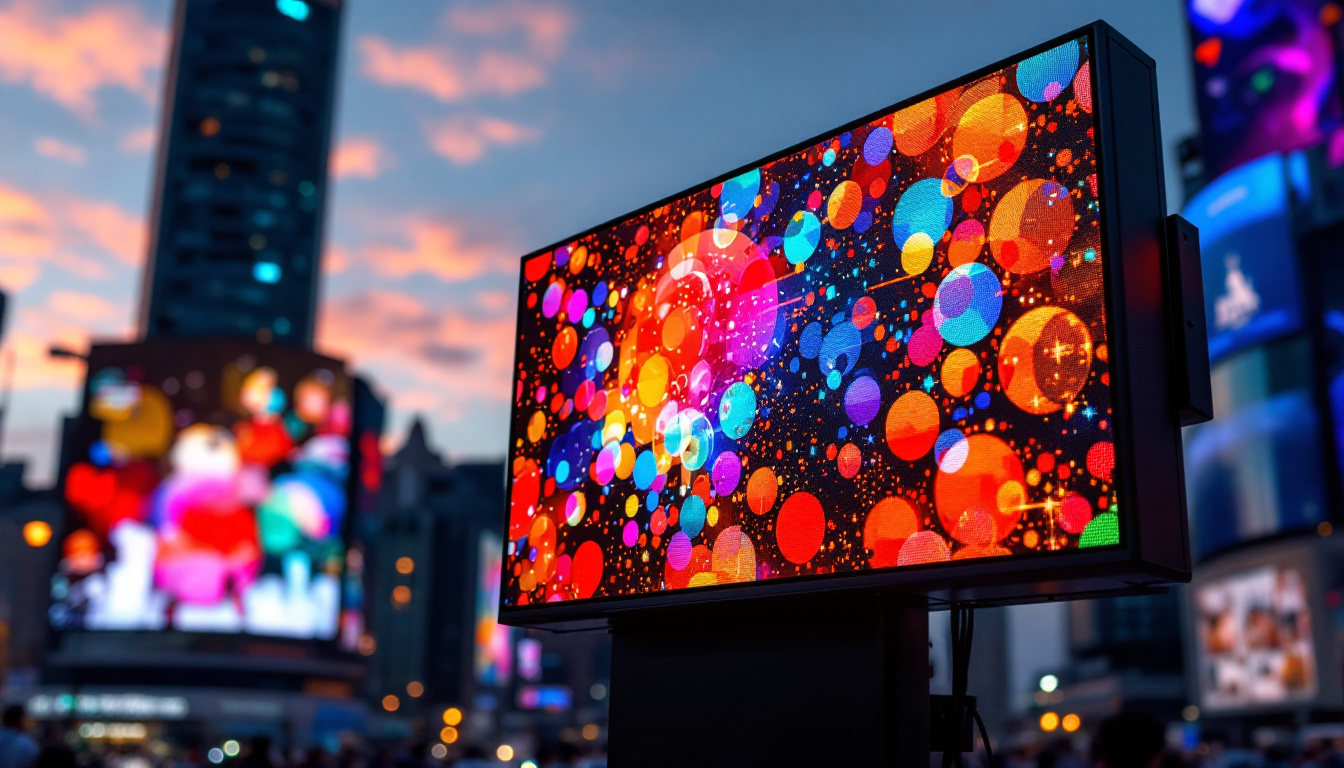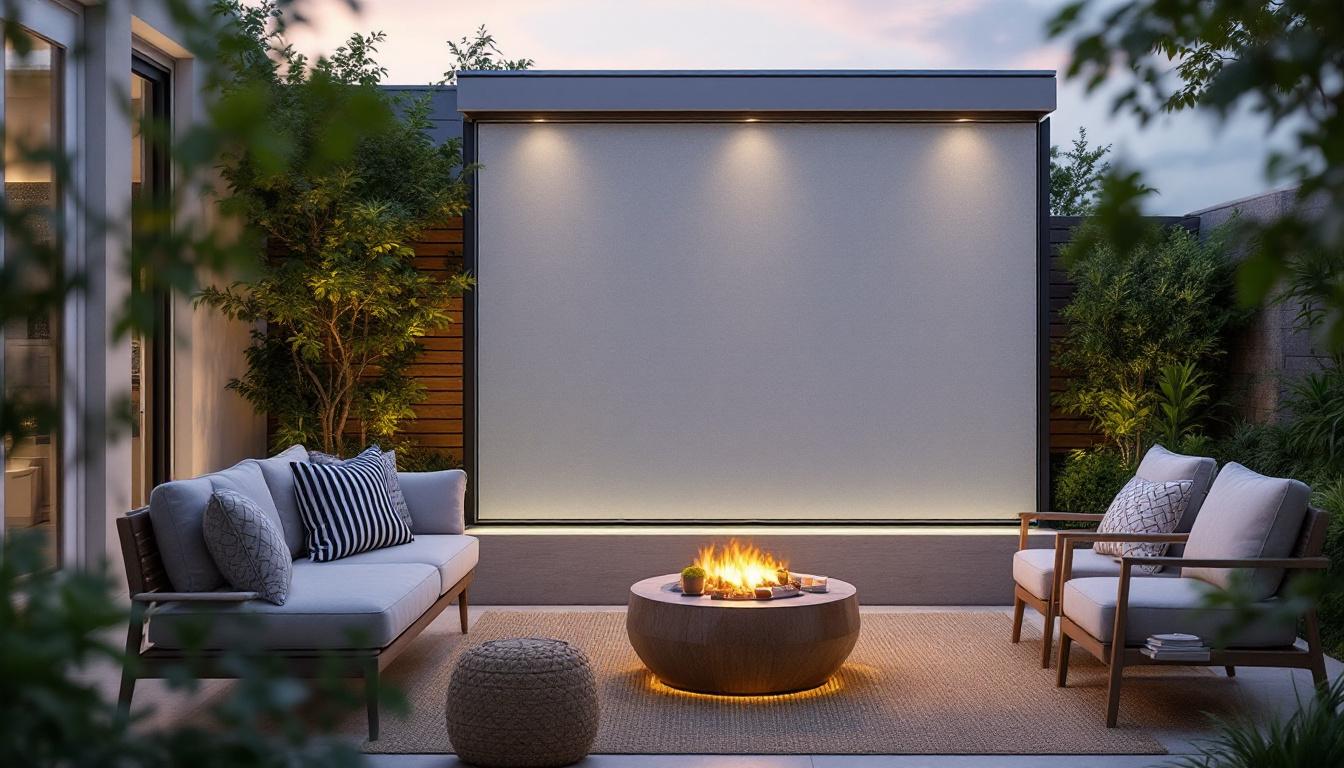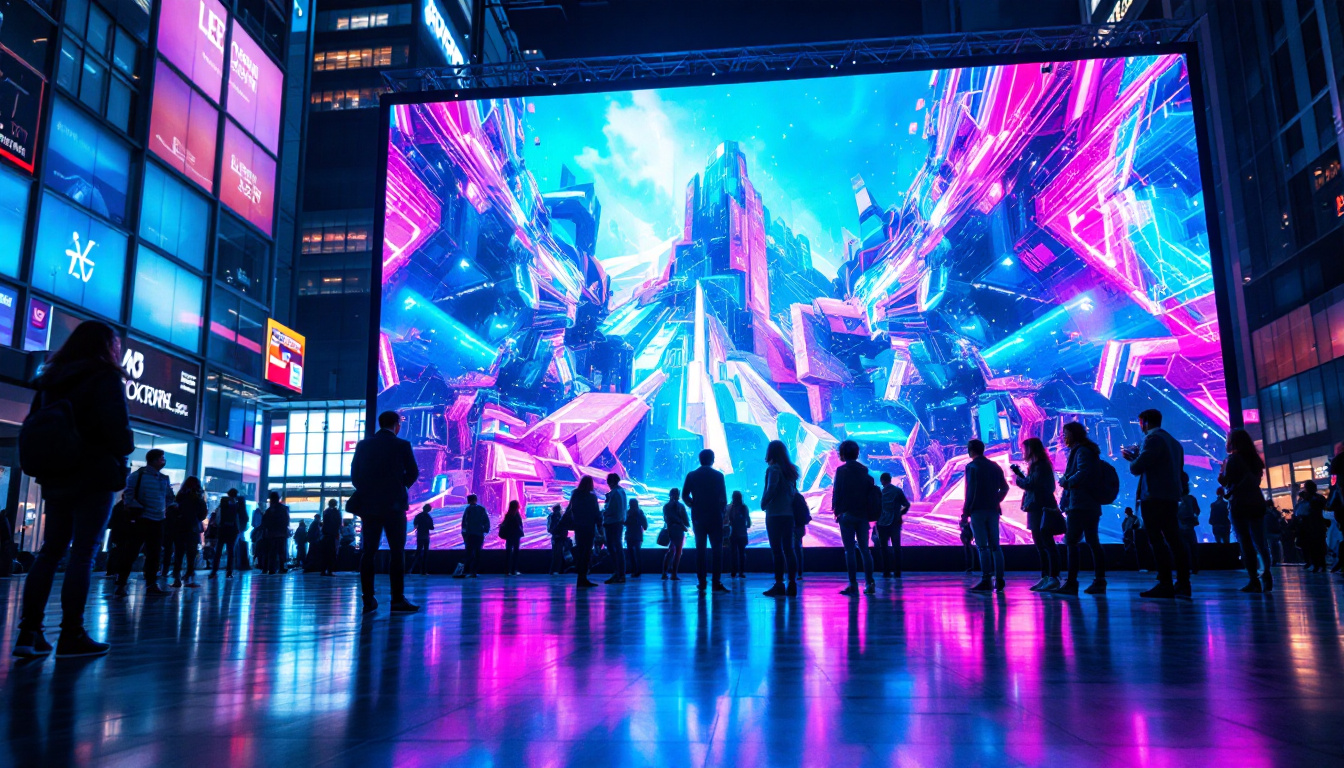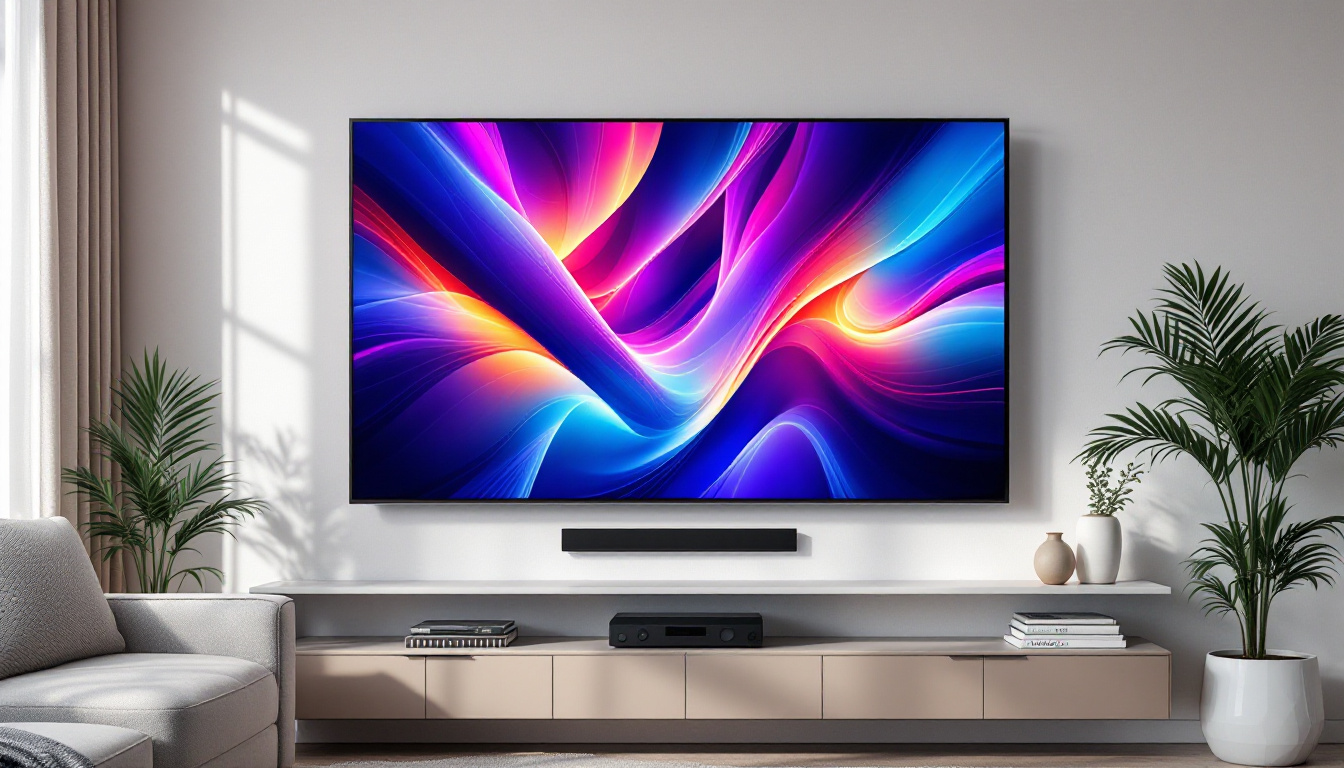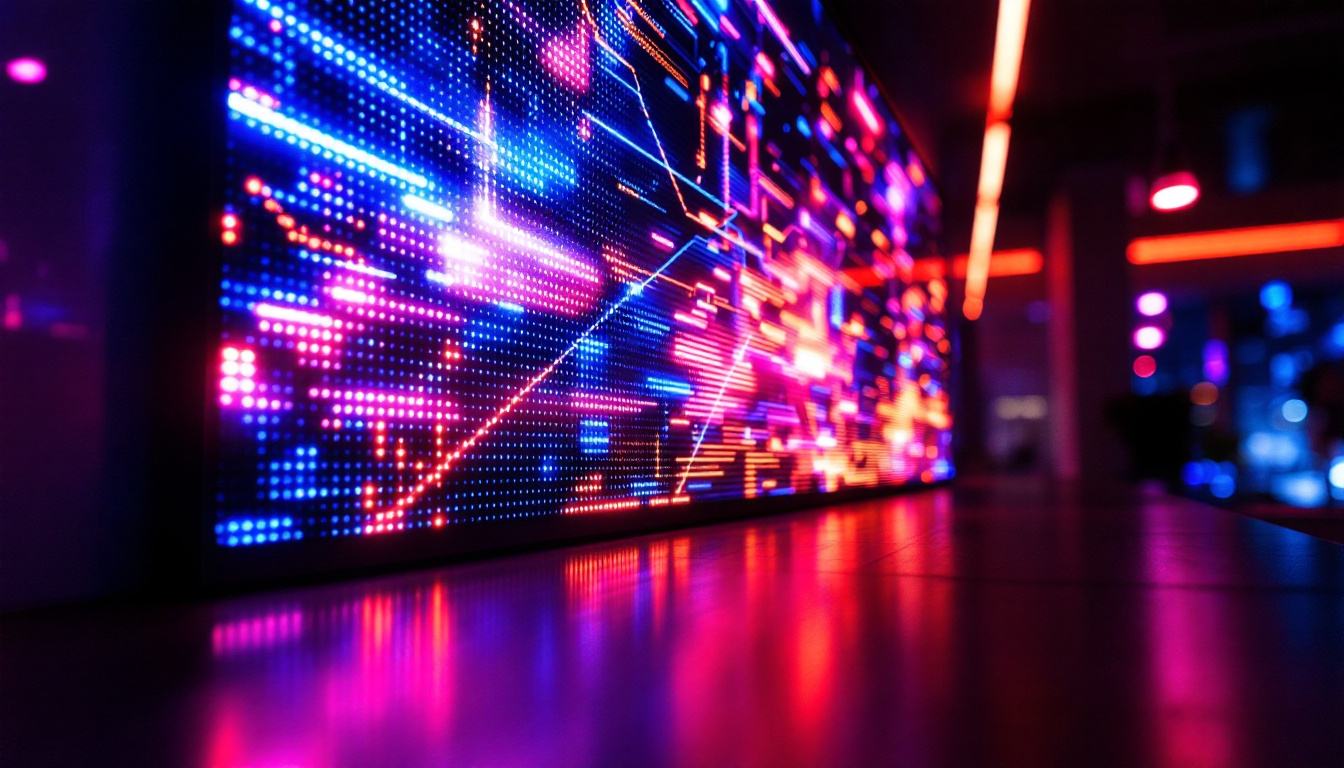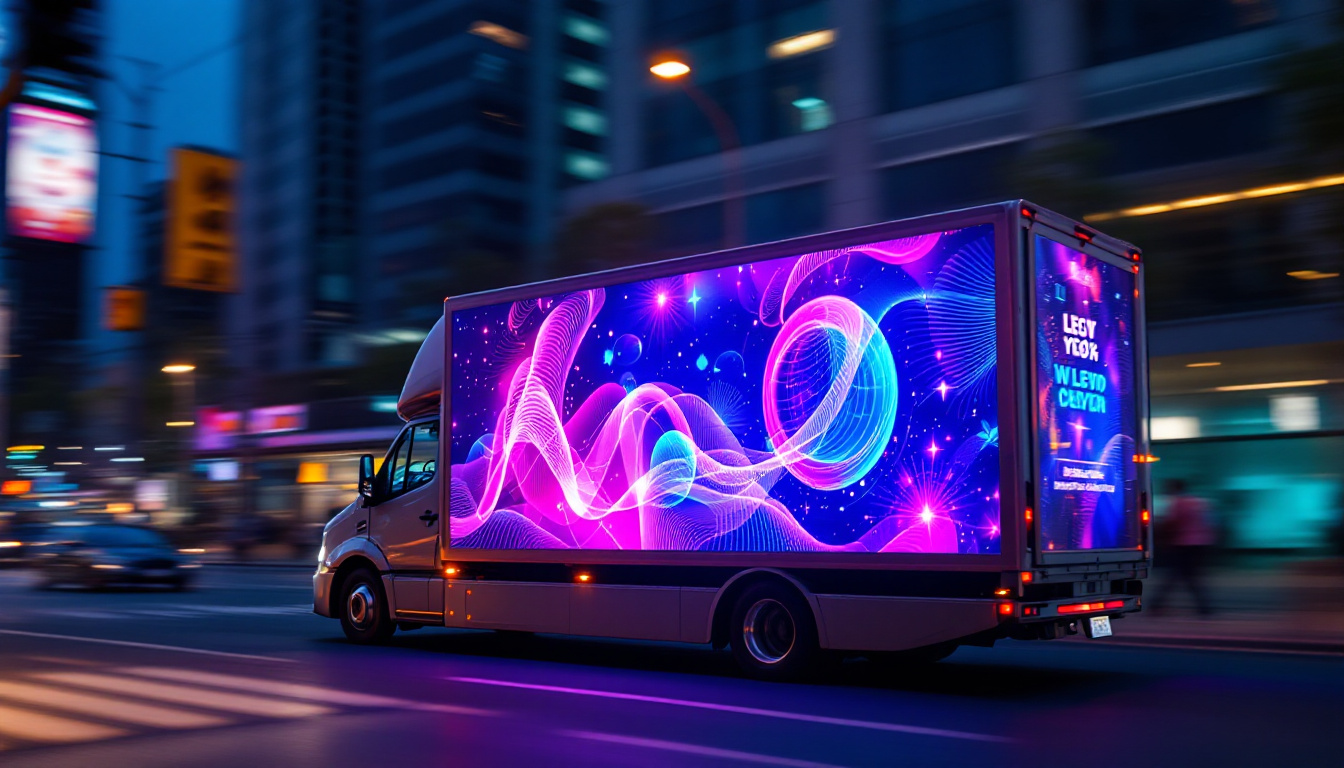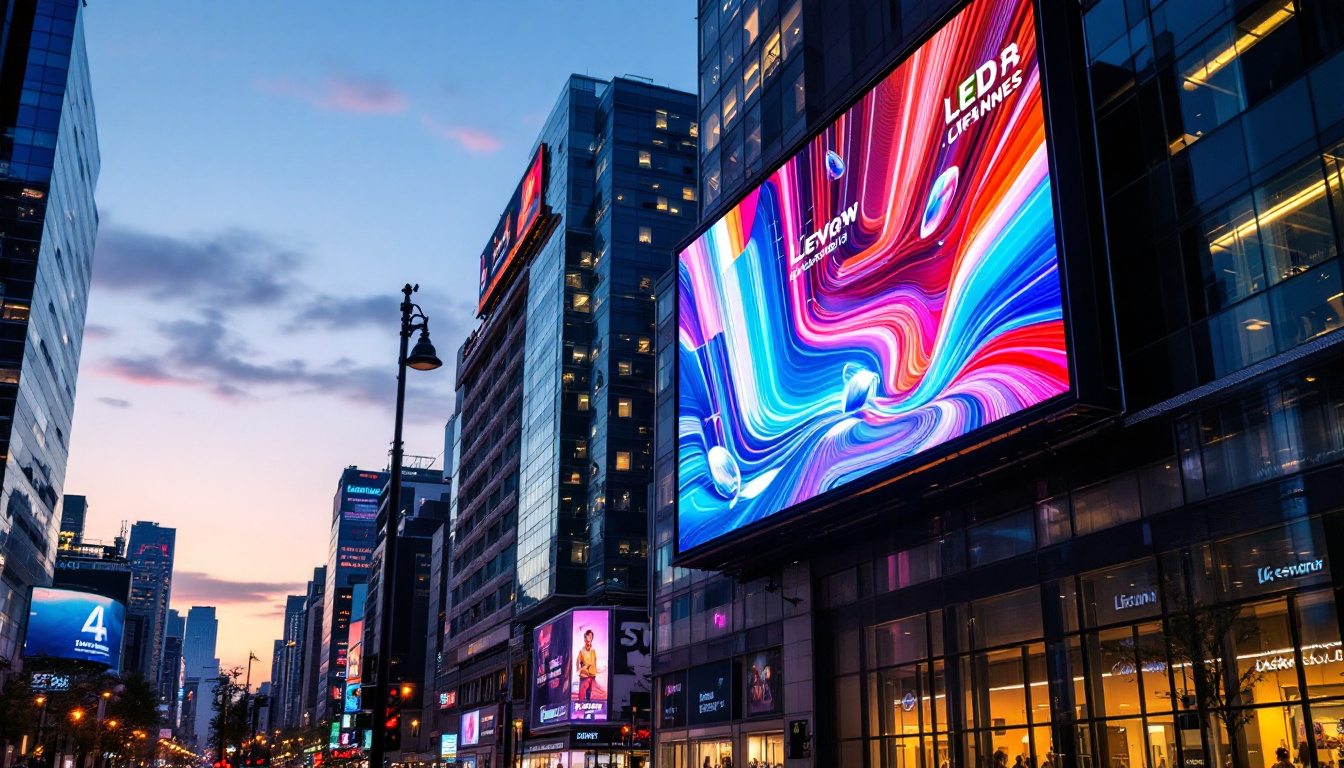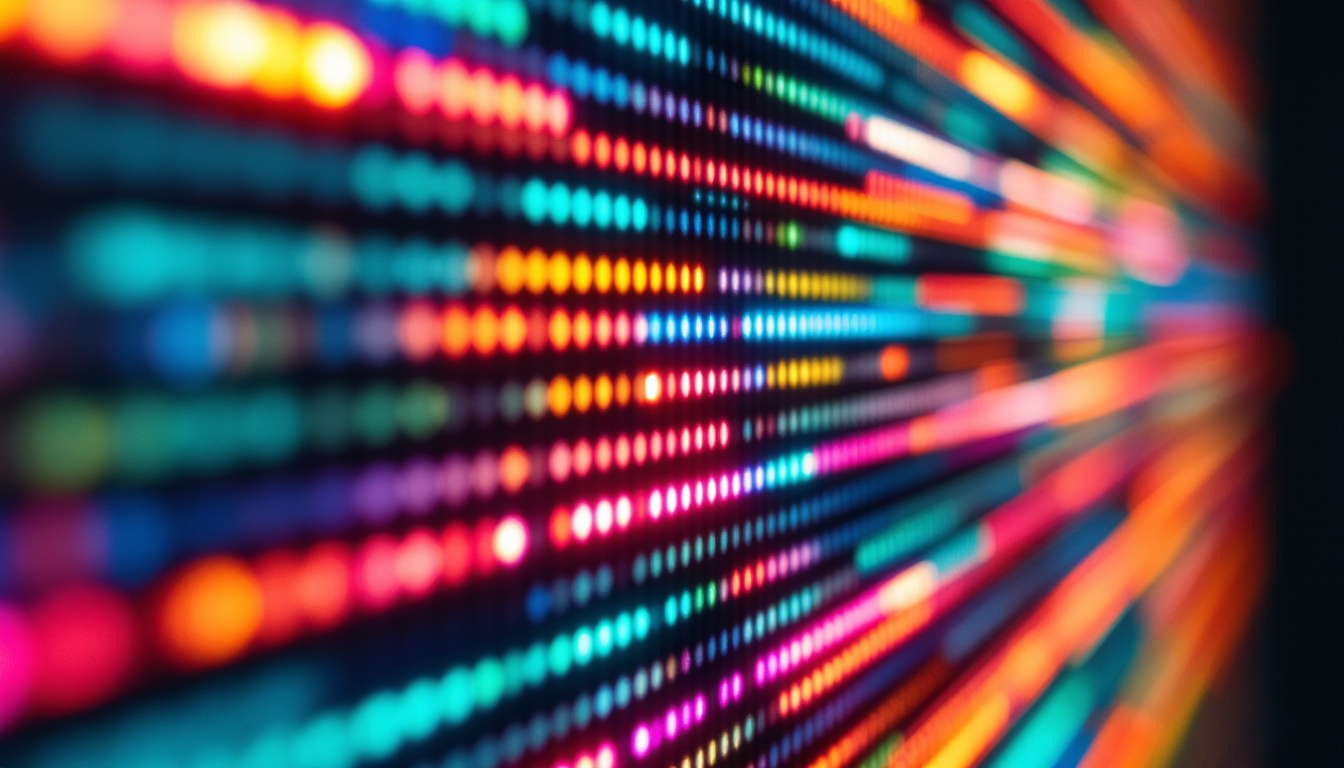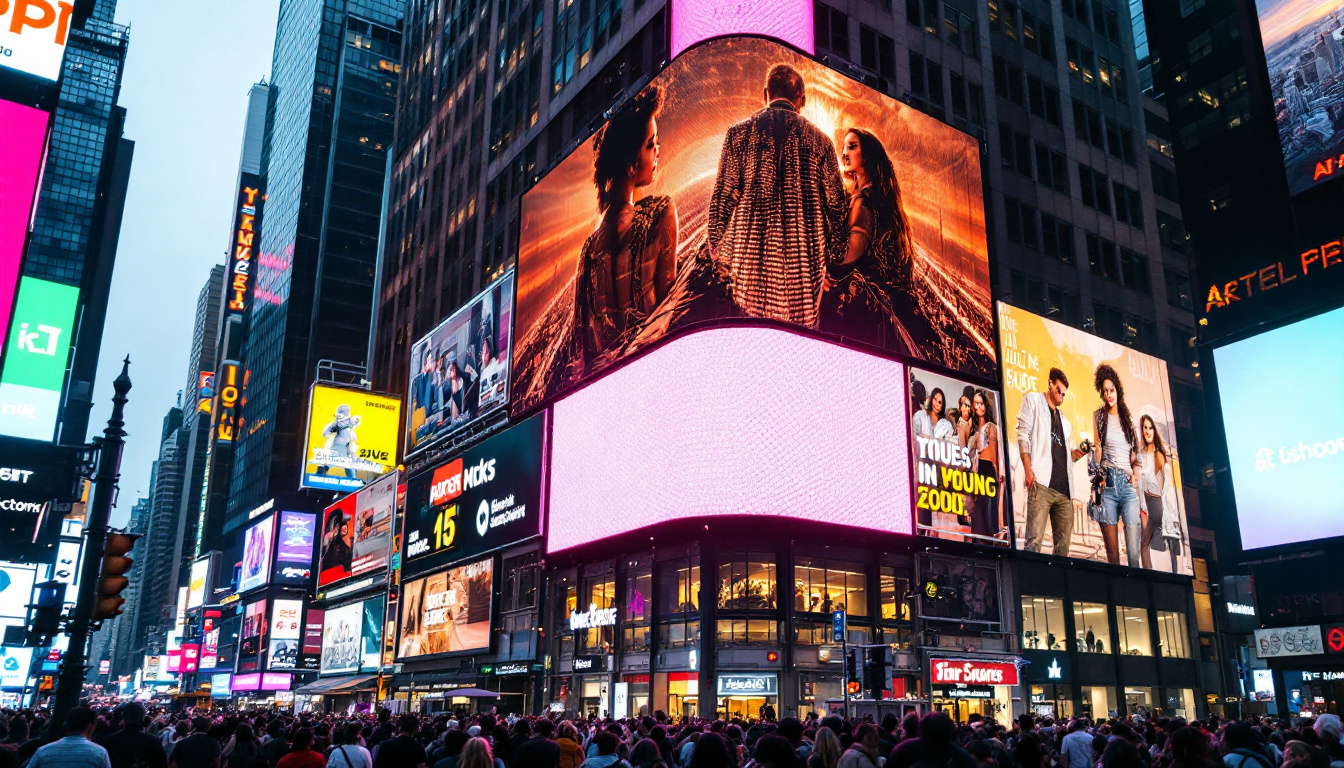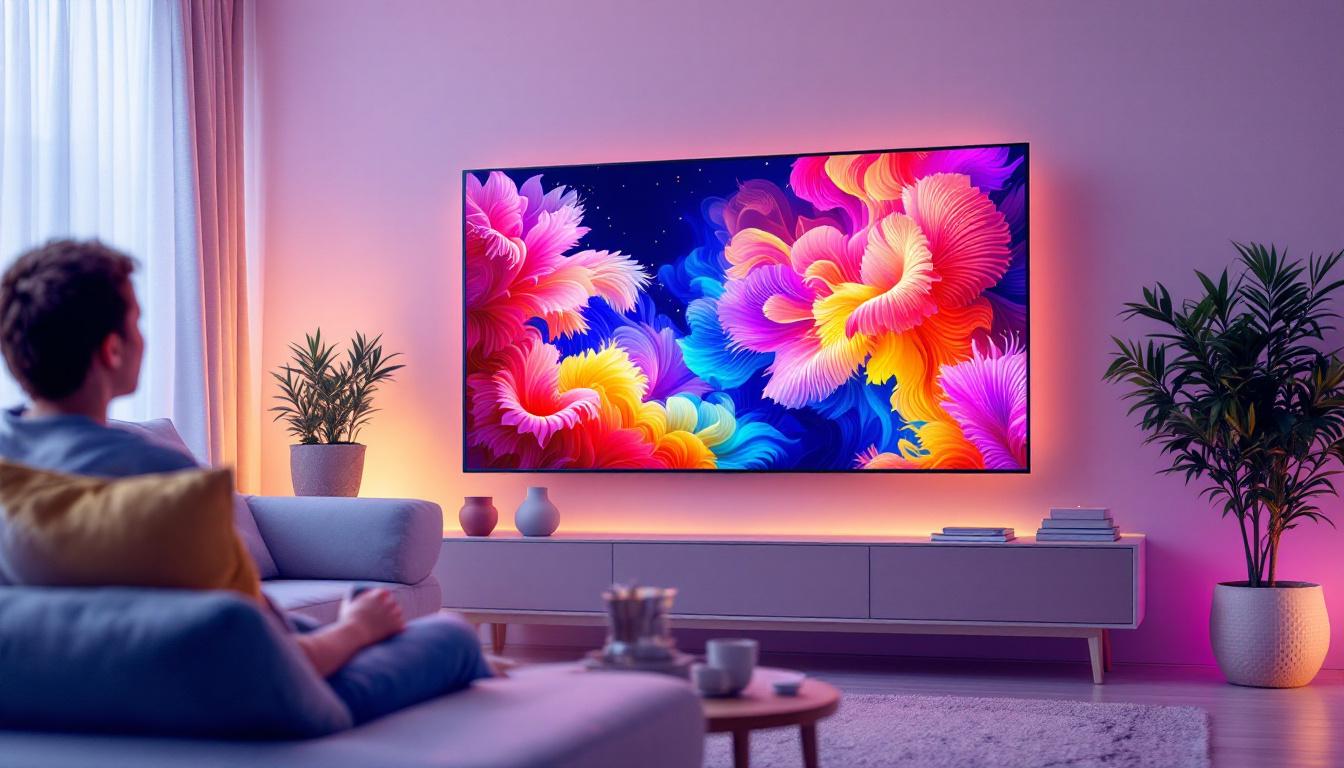In today’s fast-paced digital world, the demand for high-quality visual displays has never been greater. Whether for personal use, professional presentations, or immersive gaming experiences, LED displays have become the go-to solution for many. This article delves into the intricacies of LED displays, exploring their technology, advantages, applications, and future trends.
Understanding LED Technology
Light Emitting Diodes (LEDs) represent a significant advancement in display technology. Unlike traditional LCD screens that rely on backlighting, LED displays utilize individual diodes to produce light. This fundamental difference allows for greater control over brightness, color accuracy, and energy efficiency. The versatility of LEDs has made them a popular choice not only in consumer electronics but also in commercial applications, such as advertising billboards and stage lighting, where vibrant visuals are paramount.
How LED Displays Work
At the core of an LED display are tiny semiconductor devices that emit light when an electric current passes through them. These diodes can be arranged in various configurations, creating vibrant images and videos. Depending on the design, LED displays can be categorized into two main types: direct view and backlit.
In direct view LED displays, the diodes themselves form the pixel structure, allowing for exceptional brightness and contrast. Backlit LED displays, on the other hand, utilize LEDs to illuminate an LCD panel from behind, enhancing the overall picture quality. This distinction is crucial for understanding how different LED technologies perform in various environments. For instance, direct view displays are often favored in outdoor settings due to their ability to maintain visibility in bright sunlight, while backlit displays are commonly used in indoor settings where ambient light can be controlled.
Types of LED Displays
LED displays come in several forms, each tailored to specific applications. The most common types include:
- Standard LED Displays: Primarily used in televisions and computer monitors, these displays offer excellent color reproduction and energy efficiency.
- OLED Displays: Organic Light Emitting Diodes provide even deeper blacks and better contrast ratios, making them ideal for high-end televisions and smartphones.
- MicroLED Displays: A newer technology that promises to combine the best features of OLED and traditional LED, offering superior brightness and energy efficiency.
In addition to these common types, there are also specialized LED displays designed for niche markets. For example, transparent LED displays are gaining popularity in retail environments, allowing for creative advertising while maintaining visibility through the glass. Similarly, flexible LED displays are being developed for use in innovative applications such as wearable technology and curved screens, pushing the boundaries of traditional display formats. These advancements highlight the ongoing evolution of LED technology and its potential to transform how we interact with visual information.
Advantages of LED Displays
LED displays have gained popularity for a multitude of reasons. Their benefits extend beyond mere aesthetics, impacting performance, longevity, and user experience.
Energy Efficiency
One of the most significant advantages of LED displays is their energy efficiency. Compared to traditional LCD or plasma screens, LED technology consumes considerably less power. This efficiency not only reduces electricity bills but also contributes to a smaller carbon footprint, making LED displays an eco-friendly choice. Furthermore, many LED displays come equipped with smart technology that allows users to adjust brightness levels based on ambient light, further optimizing energy consumption. This adaptability not only enhances user comfort but also prolongs the lifespan of the display.
Brightness and Color Accuracy
LED displays are renowned for their exceptional brightness levels. This characteristic makes them suitable for a variety of environments, including well-lit rooms and outdoor settings. Furthermore, LED technology allows for a broader color gamut, resulting in more vibrant and lifelike images. The ability to produce deeper blacks and brighter whites enhances contrast ratios, making images pop and providing a more immersive viewing experience. This is particularly beneficial in applications such as digital signage and advertising, where capturing attention is crucial. Additionally, advancements in LED technology, such as HDR (High Dynamic Range), have further improved color accuracy and detail, ensuring that every nuance of the image is displayed with precision.
Longevity and Durability
LED displays are designed to last. With a lifespan often exceeding 50,000 hours, they outlast many traditional display technologies. Additionally, their robust construction makes them less susceptible to damage from impacts or environmental factors, ensuring a reliable viewing experience over time. This durability is especially important in commercial settings, where displays may be used continuously for extended periods. Moreover, many LED displays are built with weather-resistant features, making them ideal for outdoor installations that face varying weather conditions. The reduced need for frequent replacements not only saves money in the long run but also minimizes waste, aligning with sustainability goals and reducing the overall environmental impact of display technology.
Applications of LED Displays
The versatility of LED displays has led to their widespread adoption across various industries. From entertainment to advertising, the applications are as diverse as they are innovative.
Entertainment and Media
In the realm of entertainment, LED displays have transformed the way content is consumed. From large-scale outdoor billboards to high-definition televisions in homes, the clarity and vibrancy of LED technology enhance the viewing experience. Concerts and events often utilize LED screens for dynamic visuals, captivating audiences with stunning imagery. The immersive experience is further amplified by the ability to synchronize multiple screens, creating a cohesive visual narrative that draws viewers into the performance. Additionally, LED displays are now commonly used in theme parks and attractions, where they serve as both information hubs and entertainment features, showcasing vibrant animations that complement the park’s themes.
Advertising and Marketing
Digital signage has revolutionized advertising, with LED displays playing a pivotal role. Businesses leverage LED technology for eye-catching advertisements that can be updated in real-time. This flexibility allows companies to respond quickly to market trends and engage customers more effectively. Moreover, the ability to incorporate interactive elements, such as touch screens or QR codes, enhances customer engagement by inviting potential buyers to participate actively in the advertising experience. As a result, brands can create personalized marketing campaigns that resonate with their target audience, making LED displays an invaluable tool in the competitive landscape of modern advertising.
Corporate and Educational Use
In corporate settings, LED displays are increasingly used for presentations and meetings. Their clarity ensures that information is conveyed effectively, while their sleek design adds a modern touch to any office environment. Educational institutions also benefit from LED technology, utilizing it for interactive learning experiences and informative displays. Classrooms equipped with LED screens facilitate collaborative learning, allowing students to engage with multimedia content that enhances their understanding of complex subjects. Furthermore, universities often use LED displays in common areas to share important announcements, event schedules, and campus news, fostering a sense of community and keeping students informed in real-time. This integration of technology into both corporate and educational settings not only streamlines communication but also enriches the overall experience for all participants involved.
Future Trends in LED Display Technology
The future of LED display technology is promising, with continuous advancements on the horizon. As demand for high-quality visuals grows, several trends are emerging that could redefine the industry.
Advancements in MicroLED Technology
MicroLED technology is poised to become a game-changer in the display market. By utilizing microscopic LEDs, this technology offers higher pixel density, resulting in sharper images and improved color accuracy. As manufacturing processes become more refined, MicroLED displays are expected to become more accessible to consumers. Furthermore, MicroLEDs are known for their energy efficiency and longevity, making them an environmentally friendly choice. As the technology matures, we may see a shift in consumer preferences, with more individuals opting for MicroLED displays in their homes and workplaces, leading to a significant reduction in energy consumption across the board.
Integration with Augmented and Virtual Reality
As augmented reality (AR) and virtual reality (VR) technologies evolve, LED displays are likely to play a crucial role in their development. High-resolution LED screens can enhance the immersive experience, providing users with stunning visuals that blur the line between the digital and physical worlds. The integration of LED displays with AR and VR can also facilitate more interactive experiences, such as gaming and training simulations, where real-time feedback and visual fidelity are paramount. Additionally, as the technology becomes more sophisticated, we may see the emergence of wearable AR devices that utilize compact LED displays, further expanding the potential for innovative applications in entertainment, education, and beyond.
Flexible and Transparent Displays
The demand for innovative display solutions has led to the development of flexible and transparent LED displays. These technologies open up new possibilities for design and functionality, allowing for displays that can be integrated into various surfaces, from windows to clothing. The potential applications are vast, ranging from advertising to smart home solutions. For instance, transparent displays could revolutionize retail environments by providing dynamic advertising that doesn’t obstruct the view of products behind them. Moreover, flexible displays could lead to the creation of foldable devices that combine the portability of smartphones with the expansive screen real estate of tablets. As these technologies continue to evolve, we may witness a transformation in how we interact with our surroundings, making information more accessible and visually engaging than ever before.
Conclusion
LED displays have undoubtedly transformed the visual landscape, offering unparalleled brightness, energy efficiency, and versatility. As technology continues to advance, the possibilities for LED displays are virtually limitless. From enhancing entertainment experiences to revolutionizing advertising and corporate communications, LED technology is set to remain at the forefront of display innovation.
As consumers and businesses alike embrace these advancements, the future of LED displays promises to be exciting and dynamic. Whether through improved color accuracy, integration with emerging technologies, or the development of new display forms, LED displays are here to stay, shaping the way we interact with visual content for years to come.
Discover the Future of Visuals with LumenMatrix
Ready to elevate your visual experience with the latest in LED display technology? Look no further than LumenMatrix, a pioneer in crafting immersive and vibrant visual solutions. From Indoor and Outdoor LED Wall Displays to innovative LED Posters and Sports Displays, LumenMatrix offers a wide array of products designed to make your brand stand out. Embrace the future of digital signage with our Custom, All-in-One, and Transparent LED Displays, each engineered to captivate and engage your audience. Don’t miss the opportunity to transform your visual communication. Check out LumenMatrix LED Display Solutions today and see your message come to life with clarity and impact.

